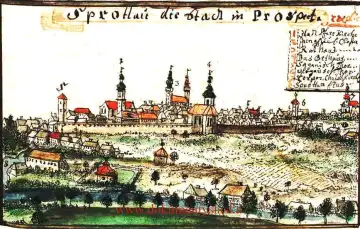The film Jesus Revolution about the youth revival in the 1970s has done much better than expected in US cinemas – and now there are reports that some have even given their lives to Jesus after seeing the film. At a movie theater in Miami, a prayer and praise meeting arose after the film was over where some made the decision to become Christians.
Here I have made a video where I have collected clips from the revival meeting at the cinema:
People were saved even during filming. When Jonathan Roumie, who plays the hippie preacher Lonnie Frisbee in the film (and who also plays Jesus in the series The Chosen) filmed a scene where Lonnie baptized hundreds of people in the sea, some of the extras said that they had never been baptized but wanted to be born again in the name of Jesus. Thus, some of the baptisms that made it into the movie are not staged, but the cameras filmed people being baptized for real! 🙌
The film’s producer also said that many in the studio and on the production team who were not Christians were moved to tears when they saw the film and wanted to know more about Jesus. This is truly no ordinary Hollywood movie!

The Jesus Movement in the 1970s emerged as a unique blend of evangelism, charismatic spirituality, and activism for peace and justice. Participants were deeply engaged in anti-war protests, expressing their commitment to nonviolence and social reform. This countercultural movement also fostered a strong sense of community, with many followers living in communes and practicing a simple, communal lifestyle that emphasized shared values and spiritual growth.
As the Jesus Movement gained momentum, it attracted a diverse range of individuals, including disenchanted youth, disillusioned with the mainstream societal values of the time. These followers sought solace in the teachings of Jesus, interpreting them as a call for radical transformation of both individual lives and society as a whole.
The movement’s emphasis on charismatic spirituality, which included speaking in tongues, divine healings, and prophetic visions, created a sense of unity and transcendent experience among its members. This spiritual fervor served to strengthen their commitment to activism and social justice, fueling the movement’s impact on the broader culture.

The Jesus Movement’s anti-war stance aligned with the growing peace movement of the era, and its members often participated in protests and demonstrations against war and militarism. This commitment to peace extended to various social issues, such as racial and economic justice, environmental concerns, and advocating for the rights of marginalized communities.
Despite its countercultural roots, the Jesus Movement also had a lasting influence on mainstream Christianity. It contributed to the growth of contemporary Christian music, as well as the rise of non-denominational and charismatic churches. Ultimately, the Jesus Movement’s unique combination of evangelism, spirituality, and activism served as a powerful catalyst for change, both within Christian communities and in the broader society of the 1970s.

It’s amazing to see how the Holy Spirit is impacting people’s lives through this movie. Now sadly, I haven’t been able to watch the movie myself since I live in Sweden, but a Swedish friend of mine, Anders-Petter Sjödin, went to the premiere in Los Angeles and said that it was amazing. If you have the opportunity to see it, you should definitely take it.
Micael Grenholm is a Swedish church historian, author and an editor for PCPJ.

Pentecostals & Charismatics for Peace & Justice is a multicultural, gender inclusive, and ecumenical organization that promotes peace, justice, and reconciliation work among Pentecostal and Charismatic Christians around the world. If you like what we do, please become a member!














